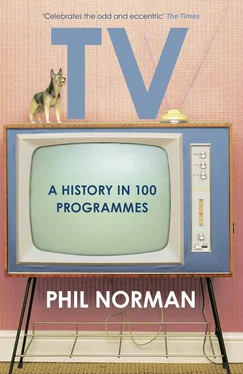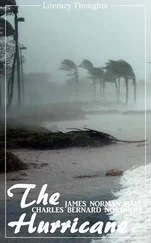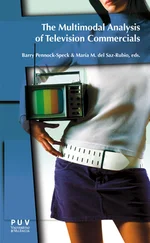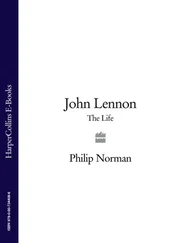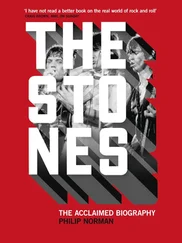Rotund, neatly bearded and rarely seen out of an apron, Harben emerged from the post-war landscape of ration coupons and meat queues to become an ever-present face on TV via his first series, the sensibly-titled Cookery . Harben rustled up austerity lobster vol-au-vents and welfare soufflés for the vicarious pleasure of families struggling on one slice of condemned corned beef a week, but few recognise just how many aspects of the twenty-first century tele-cookery landscape owe him their existence. Without Harben, we may never have witnessed these culinary devices:
THEATRICALITY – The son of film actors, Harben knew how to put his recipes, and himself, across to best effect in the muffled turmoil of early television, keeping the stream of patter going as the sheets of flame leapt from his flambé pan. ‘He stands almost alone,’ remarked an awed Reginald Pound, ‘a precision instrument of self-expression.’ 14
MERCHANDISE – Not content with putting his grinning, bearded face on jars of Heinz pickle and packs of Norfolk stuffing, Harben supplemented his meagre BBC salary with the launch of Harbenware, heavy gauge saucepans with a special ‘Harbenized’ non-stick coating, bearing labels festooned with his grinning, bearded face.
BACK TO BASICS – The ridicule endured by Delia Smith for demonstrating how to boil an egg was nothing new to Harben, who devoted the lion’s share of one programme to making a cup of tea. Pot-warming temperatures, infusion times, even the height from which to pour the water onto the leaves were discussed at rigorous length.
NATIONAL AND INTERNATIONAL DISHES – Harben got away from the standard Mayfair dinner party aspirations of TV cookery to celebrate Britain’s regional food in 1951’s Country Dishes , rustling up everything from Cornish pasties to jellied eels. If technology had allowed him a global culinary excursion he’d have made one – instead he brought the resident chef from NBC’s Home show to the UK for a national dish swapping session in 1955’s Transatlantic Exchange .
SLUTTY INGREDIENTS SCANDAL – Delia’s controversial dalliance with frozen mash and other timesavers was pre-empted in 1954 when Harben rustled up sole bonne femme using haddock and milk instead of the traditional Dover sole and wine. An outraged telegram from catering students at Blackpool Technical College reached the Director General within hours. ‘The BBC permits Harben to clown with classical French dishes in a way which exposes the British kitchen to a justifiable scorn,’ 15 they raged. Whatever, they demanded, would the Americans think if this got out?
NUTRITIONAL CRUSADE – Getting the nation eating properly was another Harben innovation. This being 1949, however, the problem was that folk weren’t eating enough. Specifically, Harben attacked the ‘sparrow-sized breakfasts’ of Britain’s working men. ‘We cannot stay a first-class power if we give up eating a first-class breakfast,’16 he told the press, encouraging British men to get up earlier and fry their own bacon if necessary. Harben’s Great British Breakfast was possibly unique in food campaigns for also recommending a few post-prandial minutes with a newspaper and a cigarette.
PRIMADONNA ANTICS – Every great TV chef must exhibit a total lack of humour at a crucial moment. Harben set the template in 1957 on the set of The Benny Hill Show . He’d sportingly played the stooge before to the chaotic Mr Pastry and rebarbative Fred Emney, but Hill took a step too far. ‘They submitted a sketch to me which I considered degrading. The whole thing indicated that I couldn’t cook. That’s no joke to me.’17
MOLECULAR GASTRONOMY – Beating Heston Blumenthal by over forty years, Harben stocked up on microscopes, slide rules and calculus tables for his 1964 ITV series The Grammar of Cookery . With technical advice from microbiologist A. L. Bacharach and editions called ‘The Three Faces of Meringue’ and ‘Egg Liaison’, he took cookery to new heights of sophistication. ‘If you are a great cook, madam,’ he claimed, ‘you are a singer of songs, a poet, an actress, a painter, a pianist. You are Maria Callas, you are Cilla Black, you are Vanessa Redgrave all rolled into one. And the world is at your feet.’18
CAVALCADE OF STARS (1949–52)
DuMont (Drugstore Television)
Vaudeville begets the sitcom.
AS TELEVISION PROGRESSED FROM esoteric technology to worldwide medium-in-waiting, one question dominated: what the hell are we going to put on it? The Manchester Guardian held a competition asking just that in 1934. Winning suggestions ranged from high mass at St Peter’s to a chimps’ tea party, ‘MPs trying to buy bananas after hours’, and ‘Mr Aldous Huxley enjoying something’.19
In America, such wild fancies became real. There was the 1944 show that led one critic to gush, ‘This removes all doubt as to television’s future. This is television.’20 ‘This’ was Missus Goes A-Shopping , a distant ancestor of Supermarket Sweep. A more solid solution to the content problem was sport. Entire evenings in the late 1940s consisted of the sports that were easiest to cover with the new stations’ primitive equipment: mainly boxing and wrestling. On the other hand, figured New York-based programmers, there was a whole breed of people who were past masters at filling an evening with entertainment off their own bat. They were just a few blocks away, doing six nights a week for peanuts.
Vaudeville stars like the Marx Brothers had dominated pre-war cinema comedy, touring a stage version of each film across America to polish every line and perfect every pratfall before they hit the studio. Television wanted vaudevillians for the opposite quality: bounteous spontaneity. The big, big shows began with NBC’s Texaco Star Theatre , hosted by Milton Berle. Through a mess of broad slapstick, elephantine cross-dressing and taboo-nudging ad libs, Berle became the first of television’s original stars, with his loud and hectic shtick penetrating the fog of the early TV screen like bawdy semaphore from the deck of an oncoming battleship. No marks for élan, but plenty for chutzpah.
Other broadcasters followed suit, including DuMont. The odd one out of the networks, DuMont originated from TV manufacturing rather than broadcast radio, so had to search harder to find celebrities, and struggled to keep them. Cavalcade of Stars , their Saturday night shebang, was a case in point. It was originally hosted by former Texaco stand-in Jack Carter, then Jerry Lester, both of whom were poached by NBC as they became popular. Desperation was setting in when they came to Jackie Gleason. Gleason, having bombed in Hollywood, was working through the purgatory of Newark’s club circuit when DuMont offered him a two-week test contract. Gleason had worked in TV before, starring in a lacklustre adaptation of barnstorming radio sitcom Life of Riley , so had his reasons to be wary. But that was someone else’s script. Cavalcade was 100% Jackie.
Every show needed a sponsor. Cavalcade , lacking the might to pull in big time petroleum funds, was sponsored by Whelan’s drugstore chain. Each edition was preceded by a strident, close-harmony paean to the delights of the corner pharmacy, under the bold caption ‘QUALITY DRUGS’. Then on came The Great One in imperial splendour with a retinue of his ‘personally-auditioned’ Glea Girls. Often he’d daintily sip from a coffee cup, roll his eyes and croon ‘Ah, how sweet it is!’, his public chuckling in the knowledge that the cup wasn’t holding coffee. After his opening monologue – a combination of double-takes, reactions and slow-burns as much as a string of verbal gags – he’d request ‘a little travellin’ music’ from his orchestra, and to the resulting snatch of middle eastern burlesque, he slunk around the stage in a possessed belly-cum-go-go dance before freezing stock still and uttering the immortal line, ‘And awaaaaay we goooo!’ After all that, the programme actually started.
Читать дальше
